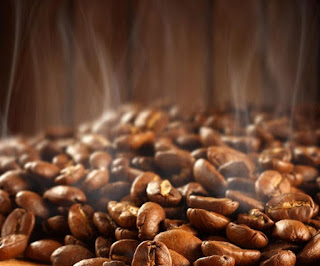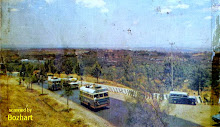The basics of coffee brewing methods are to consider if we want to brew coffee as much as possible. Brewing coffee with maximum results arguably is a difficult thing. Some of the things that became parameter key of brewing techniques are sometimes passed away if we do not pay attention to detail of the process properly.
Sometimes we brew the same coffee with the same tools as the results can be different. If we bothered a little, every result we steeping, although different, can we make the handle basic reference for the future we are able to brew coffee as consistent as possible. Here are 8 things basics of brewing coffee that need to be considered to help improve the quality of coffee brewing.
THE BASIC OF COFFEE BREWING METHODS
Coffee Brewing Basics 1: Knowledge of Brewed Tool
We can categorized The basics of coffee brewing methods into 4 major lines.There are Boiling, Immersing/steeping or soaking in a certain period, Pourover/drip or filtering coffee using special tools, Pressuring or coffee extracting with a special water pressure from the sources that can produce water pressure, such as an espresso machine.By getting to know the four major methods makers, we can know each of these coffee tools ways of working. If we do not understand how these tools should work, then we will make mistakes in coffee brewing. For example, at the moment we do not know how the french press ways of work perhaps we would not suppress it, but to filter it.
Coffee Brewing Basics 2: Cleanliness of the Brewing Tools
We do not rush to discuss the coffee and water ratio, how to pour or more if we have not been able and willing to clean up our coffee makers tools. It is The basics of coffee brewing methods.These tools cleanliness will greatly affect the results of our coffee brewing. If we brew a coffee and unwilling to clean the tools after use, the remnants of the steeping will stick so it can be filth. If that happens, then the filth will affect the aroma and flavor. For example, if we do not clean mesh filter on the french press, it will leave a small residue of oil and attached to and affect the aroma and taste of steeping. Because oil and a small residue will cause odor and taste bland of coffee.
Coffee Brewing Basics 3: Coffee Beans Freshness
The freshness of coffee beans is a very crucial problem in the basics of coffee brewing methods. In fact, not only The freshness of roasted coffee beans that must be fresh when used, the freshness of green bean also must be fresh, if not it's going to cause a sense of the less enjoyable. No matter eve. the green bean is the result of Cup of Excellence competition.
Green bean which is not quite fresh, and stored more than one year or with a poor storage, will cause a musty taste. The quality of taste and aroma becomes decreased when we consumed - I used to call it flat - although it toasted one week ago. Meanwhile, a roasted bean that has been aged 2 months since roasting, when brewed will not look fresh. In terms of visuals, Coffee that less fresh usually no or less blooming than freshly roasted bean when brewed.
We could rate the freshness of the coffee, either green bean or roasted bean, by smell the aroma and see the colors. The plural musty aroma can be easily recognizable, so we will likely know that the coffee is smell stale or not. Then, if we see that less fresh green bean usually the color turned white.
Either roasted bean or green bean is very susceptible to odors from the ambient air, light, humidity, and heat. Therefore, cafe or coffee shop who did not keep the roasted bean or green bean from these factors, it is certain they are serving less quality coffee than the maximum. Sometimes, coffeeshop stores its green bean in an open sacks state in the smoking area cafe.
Coffee Brewing Basics 4: Ground scale of Coffee Powder
There is a very wise suggestion from coffee grinder sellers to prospective buyers: "grind your coffee just before brewing." To me, the phrase is not intended in order to be more sold wares, but it is indeed a very good suggestion for us to follow. The coffee beans which have been grinded open its cavity surfaces, or so-called surface area, into smaller particles from the previous coffee beans. This makes the coffee aroma becomes more quickly disappear.
From the first minute the coffee grinded, the coffee gaseous compound begins to evaporate. That is the reason why when we brew coffee that has been become powder for a long time, the aroma and the taste will be reduced. However, for maximum brewing not just grind the coffee just before to be brewed, but also need to adjust the results of our coffee which is medium ground or fine ground with brewed time we want. Why? Because with the fine ground coffee the faster it will dissolve with water. Meanwhile, the coffee should we dissolve about 1.5 - 2% only from the quantity of coffee that we are prepared, the rest is water that will combine coffee flavor that we wanted.
When we dissolve the coffee less or more from the proper time, the result may be far from what we want. For example, the coffee is too watery or thick. I recommend a faster extraction time on fine ground coffee and slower time on the coarse ground. For example, the french press requires coarse ground results due to brewing time needed for a french press is 4 minutes, while the espresso machine requires much finer from the french press because brewed only about 20-35 seconds. Need attention that, all grinder although with the same brand and type also likely to produce different grind size. Therefore, we need to set a coffee grinder and we must know how coarse or finely ground coffee that we need for the basics of coffee brewing methods.
Coffee Brewing Basics 5: Brewing Time
Brewed Time or so-called contact time will greatly affect the coffee body that we brewed. there are some so watery or weak, some are so thick and strong. The coffee tool will clearly affect the brewing time adjustment. Because different methods will require different grind results that determine the time of brewed. The fastest time for brewed coffee is espresso brewing process while the longest time for the hot coffee was the french press. We can examine the brewing time and correlate the results with brewing methods. Although only differ a few seconds and with the same tool, the result will be different. Therefore, we need consistency to specify the brewing time with the same tool. For example, the espresso brewing time is 20 - 35 seconds, when brewed with a pour over/drip needs 2.5 - 3.5 minutes when brewed in full Immerse 3 - 5 minutes, and so on.
Coffee Brewing Basics 6: Water and Temperature
Water is the most important thing in a cup of coffee.For one cup of coffee contains 98-99% water. Well, if we are not careful in the use of water then that will happen is the destruction of the taste of coffee that we brewed. Clear water should not be odorless and should not be turbid color. In the protocol issued by World Coffee Leaders, water parsed with various parameters: hardness and total dissolve solid, pH, alkalinity, sodium, chlorine, etc.. These parameters are difficult to see with the naked eye or felt with the tongue. If we want to get the results in detail, then we must do lab tests or using a measuring tool that can parse the parameter.
But we certainly just want to know the parameters manually or simply ordinary knowledge. If there is the limited knowledge we can use the ordinary senses of sight and taste, at least just enough to know the smell and the water cleanliness. We can do an experiment, for example, put a water for one cup in a clear glass. If the water was clean, then there would be no sediment in the bottom of the glass, and usually after boiling the water still remains fresh and flavorful. Or we can also try the water for brewing. If the water is good, then the water can release taste and aroma optimally. Otherwise, if its bad water it will cause a bitter taste or brackish flavor of our coffee cups.
Regarding the water temperature, the recommended temperature ranges are between 85 ° - 96 ° C. However, keep in mind that we also have to look at the roasted coffee profile. If it is darker roast profile, it will be more prone to hot water that would cause a bitter taste. Otherwise, if the water temperature is not too hot, it will cause not optimal coffee flavor.
Coffee Brewing Basics 7: Coffee and Water Ratio
The ratio between the water and the coffee is the most important thing to be discussed. In my opinion, a good ratio is 15-18 ml of water per 1 gram of powdered coffee. If the coffee is too thick, it will cause a very bitter taste and eliminate most of the existing flavor. If the coffee is too thin, it will make the taste and aroma of coffee was not optimal and tend to be very light.
Coffee Brewing Basics 8: Attributes Taste
It's good before determining the parameters above, we did test the taste or so-called cupping. In this process, we will be able to know all the attributes of the coffee flavor. So by the time we brew coffee, we already have a sense of the parameters that we want to get. Without knowing the taste purpose that we want to find, impossible we will achieve maximum flavor.That is the basics of coffee brewing methods.




